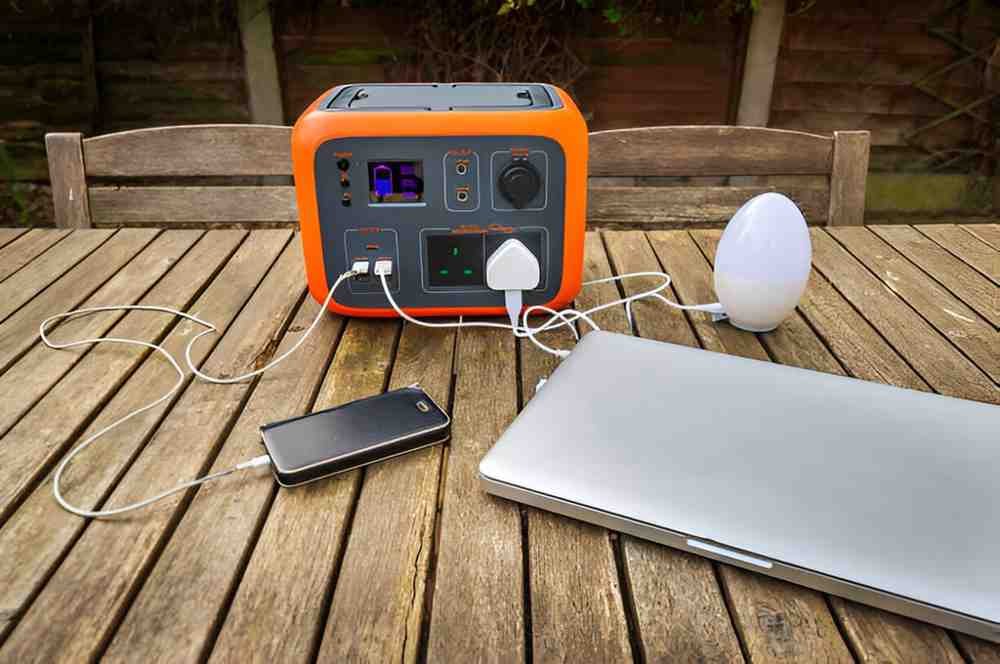When it comes to finding reliable energy solutions, portable power stations have become a go-to choice for many people. Whether you’re camping, working in remote areas, or preparing for power outages, these devices provide a versatile and convenient source of energy. In this guide, I’ll share everything I’ve learned about portable power stations—what they are, why they matter, and how to pick the best one for your needs.
Table of Contents
What Are Portable Power Stations?
Portable power stations are compact devices that store electrical energy, typically in a rechargeable battery, and allow you to power or charge various electronic devices. Unlike traditional generators, they run quietly and don’t require fuel. These stations are environmentally friendly and incredibly versatile, capable of charging everything from smartphones to small appliances.
Key Features of Portable Power Stations
- Battery Capacity: Measured in watt-hours (Wh), this determines how long the power station can supply energy.
- Output Ports: The types and number of ports, such as USB, AC outlets, and DC ports, influence compatibility with different devices.
- Weight and Portability: Lighter models are better for travel, but they might compromise on capacity.
- Recharging Options: Most units support wall charging, solar panels, and car charging, offering flexibility.
- Durability: Build quality and weather resistance are essential, especially for outdoor use.
Why Choose a Portable Power Station?
There are several reasons why portable power stations have gained popularity:
- Eco-Friendly: They don’t rely on gasoline, reducing carbon emissions.
- Quiet Operation: Ideal for settings like campsites where noise can be disruptive.
- Safety: No fumes or flammable fuel involved.
- Versatility: Compatible with various devices and appliances.
Factors to Consider When Buying a Portable Power Station
Choosing the right power station depends on your specific needs. Here are the main factors to think about:
1. Capacity and Power Output
The power station’s capacity, measured in watt-hours (Wh), tells you how much energy it can store. If you plan to charge a laptop (50 Wh) and a smartphone (10 Wh), a 300 Wh station could theoretically handle this six times. But also consider the wattage output of the ports; devices requiring high power might need a station with an AC inverter capable of handling at least 500 watts.
2. Port Variety
A mix of ports ensures you can connect multiple devices. Look for models with USB-A, USB-C, AC outlets, and DC ports. Some newer models even include wireless charging pads.
3. Recharging Speed
How fast you can recharge the station is critical, especially during emergencies. Some models support fast charging or simultaneous recharging from multiple sources.
4. Portability
If you’re taking the power station on the go, weight and size matter. Lightweight options are easier to carry but often have smaller capacities.
5. Build Quality
For outdoor use, rugged designs with water resistance and shockproof materials are ideal.
Top Portable Power Stations: A Comparison
Here’s a table summarizing some of the best portable power stations available today:
| Model | Capacity (Wh) | Output (W) | Weight (lbs) | Key Features | Price Range |
|---|---|---|---|---|---|
| Jackery Explorer 1000 | 1002 | 1000 | 22 | Solar-ready, LCD display | $999-$1,099 |
| EcoFlow Delta 1300 | 1260 | 1800 | 30 | Fast charging, Wi-Fi app | $1,199-$1,399 |
| Bluetti EB70 | 716 | 700 | 21.4 | Compact, durable design | $599-$699 |
| Anker PowerHouse II 400 | 388 | 300 | 9 | Lightweight, affordable | $299-$399 |
How to Use a Portable Power Station Effectively
Using a portable power station isn’t complicated, but there are tips to get the most out of it:
- Charge It Fully Before Use: Always start with a full charge to maximize runtime.
- Prioritize Devices: Power essential items first to conserve energy.
- Avoid Overloading: Don’t connect devices exceeding the power station’s maximum output.
- Store It Properly: Keep it in a cool, dry place to extend its lifespan.
- Regular Maintenance: Recharge the battery every few months, even if you’re not using it.
Solar Panel Compatibility
Many portable power stations are compatible with solar panels, making them a sustainable energy source. Look for models that include MPPT controllers for efficient solar charging. The table below compares some popular solar-compatible models:
| Model | Solar Input (W) | Charging Time (Hours) | Panel Compatibility |
|---|---|---|---|
| Jackery Explorer 1000 | 200 | 6-8 | Jackery SolarSaga 100 |
| EcoFlow Delta 1300 | 400 | 4-6 | EcoFlow Solar Panel 160 |
| Bluetti EB70 | 200 | 5-7 | Bluetti PV200 |
Common Misconceptions About Portable Power Stations
“They Can Replace Home Generators”
While portable power stations are useful, they’re not a complete replacement for home generators during extended outages. Generators offer higher capacity and can power large appliances like refrigerators for days.
“All Models Are Solar-Compatible”
Not all power stations work with solar panels. Check compatibility and additional accessories needed.
“Bigger Is Always Better”
High-capacity models are great, but they’re heavier and more expensive. Assess your needs to avoid overpaying.
Real-World Applications
Camping and Outdoor Activities
Portable power stations are perfect for powering lights, small fridges, and cameras during camping trips. Their quiet operation ensures you don’t disturb nature’s tranquility.
Emergency Preparedness
During power outages, these devices can charge phones, run medical devices, or power essential lights.
Worksites and DIY Projects
For contractors or hobbyists working in remote areas, portable power stations offer a clean energy source for power tools and laptops.
My Recommendations
After testing several models, here are my top picks:
- Best Overall: Jackery Explorer 1000
- Balanced capacity, portability, and versatility.
- Best for High Power Needs: EcoFlow Delta 1300
- Handles heavy-duty devices with ease.
- Best Budget Option: Anker PowerHouse II 400
- Affordable yet reliable for smaller tasks.
- Most Portable: Bluetti EB70
- Compact without compromising durability.
Conclusion
Portable power stations are invaluable tools for modern living, offering flexibility, convenience, and eco-friendliness. By understanding your energy needs and comparing features, you can find the perfect model for your lifestyle. Whether you’re preparing for emergencies or planning an adventure, these devices ensure you stay connected and powered up when it matters most.





